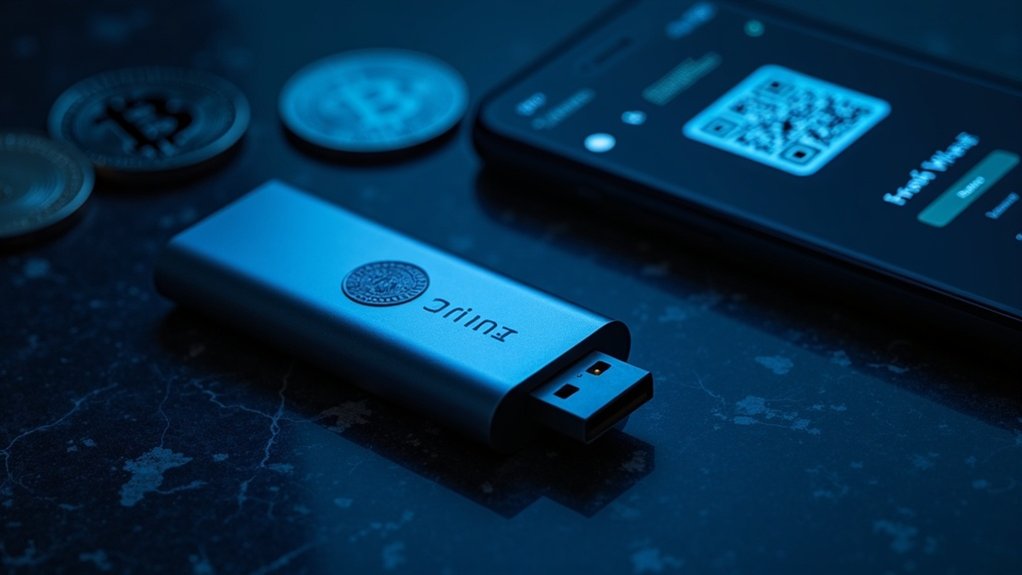Juice Finance is a DeFi protocol on Blast L2 network that lets users leverage crypto positions up to 300%. Launched in March 2024, it combines lending, borrowing, and yield farming in one ecosystem. Users can lend USDB or WETH for passive income or borrow using WETH or LRT as collateral. Currently trading between $0.0003 and $0.00044, Juice has fallen considerably from its $0.07 IEO price. The platform’s risky high-leverage options aren’t for the faint of heart.
Every DeFi enthusiast is hunting for the next yield opportunity, and Juice Finance might be it—or not. This cryptocurrency powers a Cross-Margin DeFi protocol on the Blast L2 network, offering users up to 300% leverage in USDB to amplify their yields. Yeah, you read that right—300%. The platform combines lending, borrowing, and yield farming in one ecosystem, letting users juggle multiple DeFi activities without hopping between protocols. Similar to how Full Nodes validate transactions in blockchain networks, the protocol maintains security through decentralized verification mechanisms.
JUICE launched with fanfare in March 2024, hitting an all-time high of $0.228. Fast forward to mid-2025, and it’s trading between $0.0003 and $0.00044. Ouch. That’s a brutal drop for early investors who jumped in at the $0.07 IEO price point. The market cap now floats somewhere between $75K and $600K—pocket change in the crypto world. The token’s recent 24-hour decline of -14.47% continues to pressure investors despite showing some positive momentum in the 7-day timeframe.
The system’s core functionality revolves around lending USDB or WETH for passive APY, borrowing with up to 3x leverage using WETH or LRT as collateral, and then dumping those borrowed assets into integrated vaults like Thruster and Wasabi. For security purposes, Juice Finance recommends using Metamask Wallet for storing your JUICE tokens. Users can stack rewards from multiple sources: EigenLayer, LRT, Juice, and Blast points. It’s reward points galore.
With a total supply capped at 1 billion tokens and a market cap to TVL ratio of approximately 0.0083, JUICE currently represents a protocol holding significant locked value relative to its market valuation. Impressive on paper, concerning in practice.
The protocol integrates with several DeFi platforms including Thruster, Hyperlock, Wasabi, and Particle to create farming vault strategies. Built on Blast Layer 2, it boasts faster and cheaper transactions—essential for any leveraged strategy that isn’t trying to bleed you dry with gas fees.
Trading volume jumps around but can hit tens of thousands of dollars daily. Not exactly Bitcoin numbers, but hey—liquidity is liquidity. Whether JUICE proves to be a revitalizing addition to your portfolio or leaves a sour taste remains to be seen.
Frequently Asked Questions
How Does Crypto Juice Differ From Other Defi Tokens?
Crypto Juice stands out by offering up to 300% USDB leverage through cross-margin lending—pretty rare in DeFi.
Unlike one-trick tokens, it combines lending, borrowing, and yield farming in a single ecosystem. Built on Blast L2, it leverages rebasing tokens and multiple point systems (Eigen, Juice, Blast).
Users can deposit into various integrated vaults simultaneously. The cross-protocol approach eliminates the headache of managing separate positions.
Not your average DeFi token, that’s for sure.
What Are the Risks Associated With Investing in Crypto Juice?
Investing in Crypto Juice carries substantial risks. Fraud schemes like fake airdrops target users, draining wallets with zero recourse.
The platform’s 300% leverage options? Financial suicide for amateurs. Operating on Blast Layer 2 network introduces technological vulnerabilities – smart contract bugs could vaporize assets overnight.
Zero regulation means zero protection when things go south. And let’s not forget market volatility – the crypto space shed $2 trillion in 2022 alone. Not exactly a safe bet.
Can Crypto Juice Be Staked for Additional Rewards?
No, Crypto Juice (JUICE) doesn’t offer traditional staking. Weird, right?
Instead, users earn rewards through other DeFi activities. The platform focuses on lending, borrowing, and yield farming – that’s where the money is.
Users can earn various points (Juice, EigenLayer, Blast, and LRT) by participating in these activities. Want rewards? You’ll need to engage with their cross-margin protocol on Blast L2.
No simple stake-and-forget option here, folks.
Is Crypto Juice Available on Major Cryptocurrency Exchanges?
JUICE isn’t available on major crypto exchanges yet.
It’s mainly traded on Gate.io with modest volume and some DEXs. No Binance or Coinbase listings in sight. Gate.io offers JUICE/USDT pairs with daily volumes in the tens of thousands – nothing spectacular.
The token maintains a small market cap between $67,000-$278,000, depending who you ask. For most traders, this means dealing with less mainstream platforms if they want to get their hands on JUICE.
What Is the Minimum Investment Needed for Crypto Juice?
There’s no official minimum investment for Crypto Juice (JUICE). The entry point depends entirely on the token’s current price—hovering around $0.0003 to $0.0004 lately.
Pretty cheap, honestly. You could technically buy a fraction of one token if you wanted.
Exchange platforms might have their own minimums though. The real considerations?
Transaction fees and gas costs might actually exceed your investment if you go too small. Not exactly a high roller’s game.









